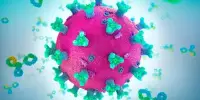For virologists and cell biologists, the evolutionary history of viruses is intriguing, if the murky, topic. Because viruses are so diverse, biologists have struggled with how to classify them and relate them to the traditional tree of life. They could be genetic elements that have gained the ability to move between cells. They could be free-living organisms that evolved into parasites. They could be the forerunners of life as we know it.
The first viruses infecting a group of microbes that may be the ancestors of all complex life have been discovered by researchers. The discovery offers tantalizing clues about the origins of complex life and suggests new directions for exploring the hypothesis that viruses were essential to the evolution of humans and other complex life forms.
The first discovery of viruses infecting a group of microbes that may include the ancestors of all complex life has been found, researchers at The University of Texas at Austin report in Nature Microbiology. The discovery offers tantalizing clues about the origins of complex life and suggests new directions for exploring the hypothesis that viruses were essential to the evolution of humans and other complex life forms.
This research opens the door to better understanding the origin of eukaryotes and the role of viruses in the ecology and evolution of Asgard archaea. There is a theory that viruses may have aided in the evolution of complex cellular life.
There is a well-supported theory that all complex life forms, including humans, starfish, and trees, which have cells with nuclei and are classified as eukaryotes, evolved when archaea and bacteria merged to form a hybrid organism. According to recent research, the first eukaryotes are direct descendants of the Asgard archaea. The most recent study, led by Ian Rambo (a former UT Austin doctoral student) and other members of Brett Baker’s lab, sheds light on how viruses, too, may have played a role in this billion-year-old history.
“This research opens the door to better understanding the origin of eukaryotes and the role of viruses in the ecology and evolution of Asgard archaea,” Rambo said. “There is a theory that viruses may have aided in the evolution of complex cellular life.”
Rambo is referring to a contentious theory known as viral eukaryogenesis. It implies that viruses, in addition to bacteria and archaea, may have contributed some genetic component to the evolution of eukaryotes. This latest discovery does not end the debate, but it does provide some intriguing hints.

The newly discovered viruses that infect currently living Asgard archaea share some characteristics with viruses that infect eukaryotes, such as the ability to copy their own DNA and hijack protein modification systems of their hosts. The fact that these recovered Asgard viruses exhibit characteristics of both viruses that infect eukaryotes and prokaryotes, which have cells without a nucleus, distinguishes them from those that infect other archaea or complex life forms.
“The most exciting thing is that they are completely new types of viruses that are different from those we’ve seen before in archaea and eukaryotes infecting our microbial relatives,” said Baker, associate professor of marine science and integrative biology and the study’s corresponding author.
The Asgard archaea, which most likely evolved more than 2 billion years ago and whose descendants are still alive, has been discovered in deep sea sediments and hot springs all over the world, but only one strain has been successfully grown in the lab thus far. Scientists collect genetic material from the environment and then piece together their genomes to identify them.
The researchers searched the Asgard genomes for CRISPR arrays, which contain small pieces of viral DNA that can be precisely matched to viruses that previously infected these microbes. These genetic “fingerprints” enabled them to identify these elusive viral invaders that infect organisms that play critical roles in the complex origin story of eukaryotes.
“We are now starting to understand the implication and role that viruses could have had in the eukaryogenesis puzzle,” said Valerie De Anda, a research associate at UT Austin and co-author of the study.
















